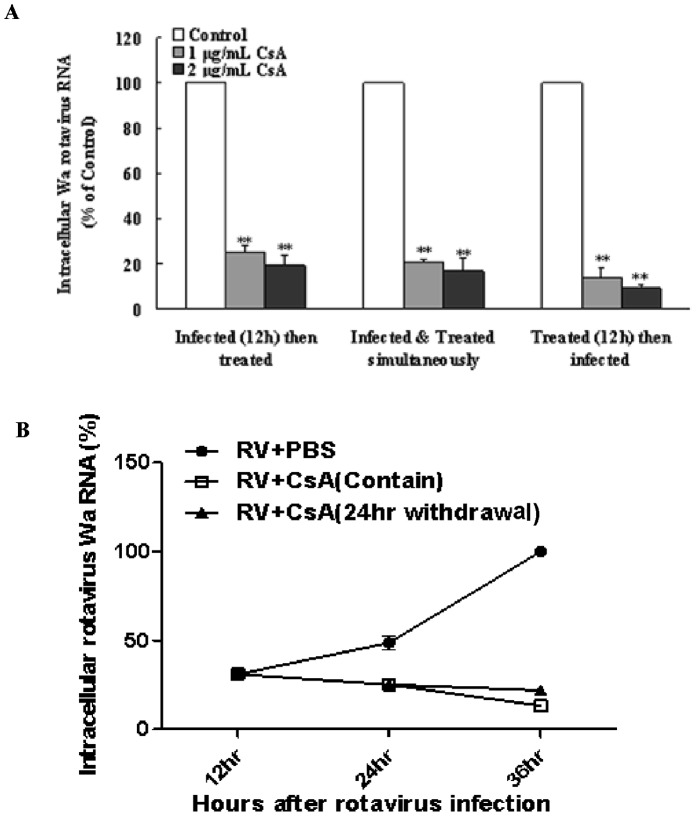Figure 2. Effect of cyclosporin A (CsA) on Wa rotavirus infection and replication under various conditions.
(A) Effect of different CsA treatment conditions on Wa rotavirus infection HT-29 cells, as follows: CsA treatment first for 12 h followed by Wa rotavirus infection for 24 h; simultaneous CsA treatment and Wa rotavirus infection followed by 24 h culture; or Wa rotavirus infection first for 12 h followed by CsA treatment for 24 h. Total cellular RNA extracted from the cell cultures was subjected to RT-PCR to quantify Wa rotavirus and GAPDH RNA. Intracellular Wa rotavirus RNA levels, normalized to GAPDH mRNA, are expressed as % of control (without CsA treatment, which is defined as 100). (B) Effect of CsA treatment withdrawal on Wa rotavirus replication. Control: HT-29 cells were infected with Wa rotavirus without CsA treatment; Maintain: Wa rotavirus-infected HT-29 cells were treated with CsA for 12 h, then cells were then cultured for additional 12 h in the presence of CsA; Withdrawal: Wa rotavirus-infected HT-29 cells were treated with CsA for 12 h, then cells were then cultured for additional 12 h in the absence of CsA. Intracellular Wa rotavirus RNA levels, normalized to GAPDH mRNA, are expressed as % of control (without CsA treatment, which is defined as 100 at 36 h post-infection). Data shown are expressed as mean ± standard deviation of triplicate cultures, and 3 independent experiments were carried out (*P<0.05, **P<0.01).

